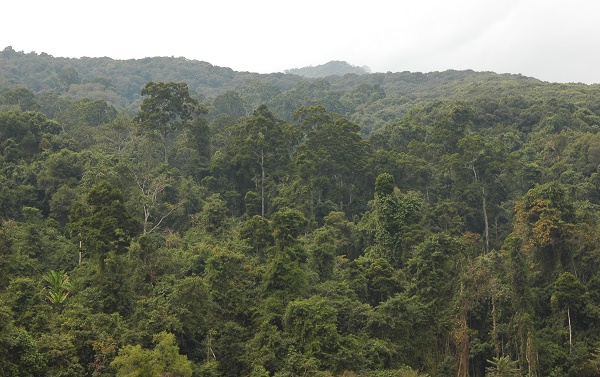
Conspecific negative density dependence (CNDD), a process that decreases population growth rates at high densities,is considered an important mechanism for maintaining plant diversity.
However, the strength of CNDD varies greatly in space and time as well as among species, and the factors related to this variation have not been fully quantified.
In a study published in Ecology, researchers from Xishuangbanna Tropical Botanical Garden (XTBG) of the Chinese Academy of Sciences explored the interspecific and temporal variation of CNDD and its potential associated factors.
The researchers used a long-term study of seedling survival in tropical forests to quantify interspecific and temporal variation among species, both interannually and intraannually, in the strength of CNDD related to enemy defense and resource acquisition.
They also studied the potential associated factors including species functional traits (such as drought resistance, defense-related traits, and resource acquisition traits).
Their study found that the density of conspecific seedlings was negatively correlated with seedling survival when water resources are scarce (i.e., during the dry season). Whereas, when resources are abundant (i.e., the rainy season), the density of conspecific adult individuals was negatively correlated with seedling survival.
Interspecific variation in CNDD was related to drought-tolerance traits in the dry season but not in the wet season, the study also revealed.
Data analysis showed that species with weaker drought resistance were less affected by CNDD in dry seasons when precipitation was higher, whereas species with stronger drought resistance were less affected by CNDD in dry seasons with lower precipitation.
Rare species were also found to be more strongly affected by CNDD than common species in dry seasons.
“Our study highlights the high variability of CNDD among different species and over time, thus requiring a deeper understanding of the environmental and functional context of CNDD and their interactions,” said YANG Jie of XTBG, corresponding author of the study.
It also provides new perspectives and ideas for further exploring mechanisms underlying species diversity maintenance under a changing climate, according to YANG.
The study was financially supported by the National Natural Science Foundation of China, the Youth Innovation Promotion Association of the Chinese Academy of Sciences, among others.

The 20-ha forest plot in Xishuangbanna. (Image by XTBG)

86-10-68597521 (day)
86-10-68597289 (night)

52 Sanlihe Rd., Xicheng District,
Beijing, China (100864)

